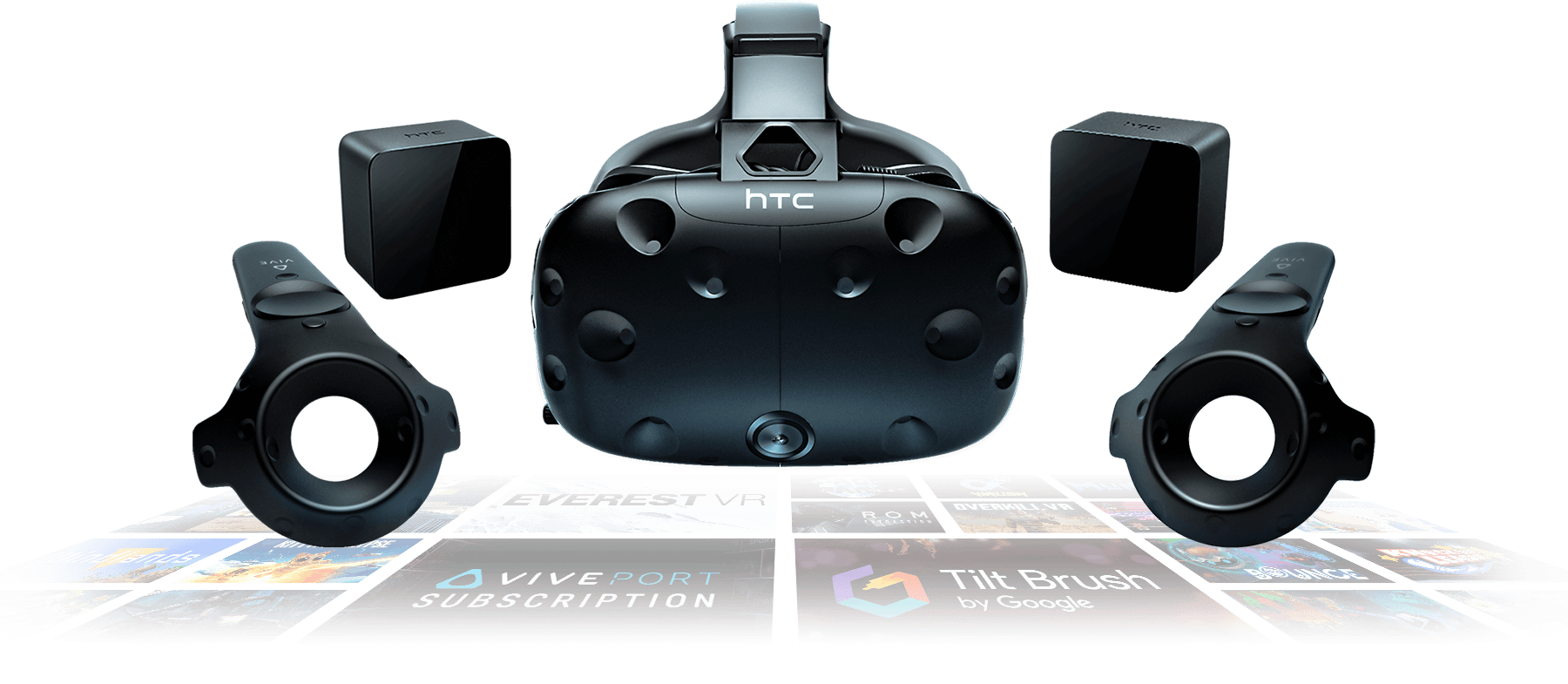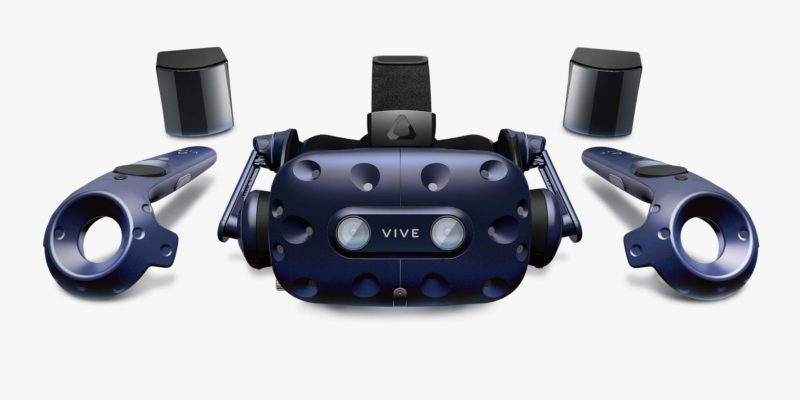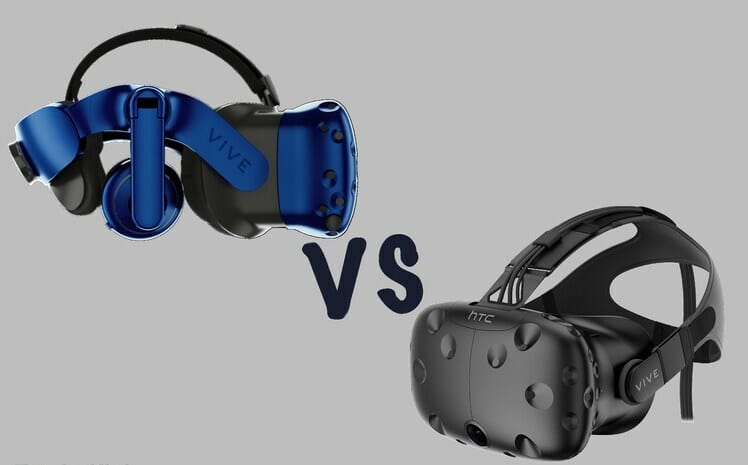Virtual reality has really gained momentum in the past few years and now there are applications, games, and more that make use of virtual reality. There are many virtual reality headsets out there ranging from the Google-made Cardboard headset to more serious and pricier VR headsets made by Samsung, Sony, and even Google itself. So let’s Check out this Vive vs Vive Pro article from here now.
One key player in the VR headset space, since the very beginning of virtual reality for the masses, is HTC. The HTC Vive virtual reality headset when launched was one of the best virtual reality headsets that money can buy and brings the best VR experience out there in combination with all the good things that HTC is well-known for, like their exceptional built quality.
Recently, HTC updated their already good HTC Vive VR headset and launched the all-new HTC Vive Pro. As the name might suggest, the Vive Pro is an updated and improved version of the already good HTC Vive. However, the Vive Pro is also priced significantly higher than the original HTC Vive making it the most expensive VR headset out there.
If you are interested in buying the best VR headset, then today we bring you a comparison of the HTC Vive vs Vive Pro to help you decide on which of HTC’s virtual reality headsets will offer you the best value for money.
Specs Comparison
Let us begin by comparing the specifications of the HTC Vive vs Vive Pro in detail.
| Configurations | HTC Vive | HTC Vive Pro |
| Display Type | OLED | AMOLED |
| Display Resolution | 2160×1200 | 2880×1600 |
| Display PPI | 448 | 615 |
| Field of View | 110-degree | 110-degree |
| Refresh Rate | 90Hz | 90Hz |
| Tracking Area | 15×15 ft | 33×33 ft |
| Audio | Separate Audio Strap | Inbuilt Headphones with in-line amplifier |
| Mic | Single | Dual |
| Connectivity | USB 2.0, USB 3.0, HDMI | USB Type-C, DisplayPort 1.2, Bluetooth |
| Sensors | Accelerometer, Lighthouse laser tracking system, the front-facing camera, gyroscope |
Lighthouse laser tracking 2.0, accelerometer, dual front-facing camera, gyroscope |
| Price | $500 (Headset, Controller, Sensors) | $800 (Only for headset) |
HTC Vive Minimum System Requirements

- AMD Radeon RX 480 / NVIDIA GTX 970.
- Intel Core i5-4590.
- 4GB RAM.
- HDMI 1.3.
- USB 2.0.
- Windows 7 Service Pack 1.
HTC Vive Pro Minimum System Requirements

- AMD Radeon RX 480 / NVIDIA GTX 1060.
- Intel Core i5-4590.
- 4GB RAM.
- DisplayPort 1.2.
- USB 3.1.
- Windows 8.1.
HTC Vive vs Vive Pro Comparison
To make it easier for you to understand and differentiate between the HTC Vive vs Vive Pro, we will be comparing the below aspects of the two VR headsets:
- Design
- Display
- Performance
- Affordability
HTC Vive vs Vive Pro Design
In terms of design, the HTC Vive vs Vive Pro is very much alike in appearance. The HTC Vive Pro features a dual-camera setup in the front compared to the single-lens camera setup of the original Vive, and this is the most noticeable physical difference between the two headsets.
The Vive Pro is a newer version that has a refined design that is more comfortable to wear. The head strap is now firm and can easily be adjusted with a dial in the Vive Pro, whereas in the original Vive, a Velcro was present to adjust the strap.
The Pro variant of HTC’s Vive headset also features inbuilt headphones, which is a very welcomed addition. The direction of the headset can be adjusted and can also be moved away from the ears of the person wearing the headset so as to allow the person to hear their surroundings without actually having to remove the headset. Both the HTC Vive vs Vive Pro feature an array of external sensors.
Both headsets do not feel heavy when worn as well. Even though the Vive Pro features quite some more feature additions than the Vive, it has not reflected much in weight.
The Vive Pro also features better design ergonomics and also features extra padding for wearing comfort. Even though the design changes are subtle in the Vive Pro, the overall improved experience that it offers over the Vive gives the Vive Pro an edge in terms of design.
HTC Vive vs Vive Pro Display
The main difference between the Vive vs Vive Pro is in the display segment.
For the Pro-variant, HTC has upgraded the display unit to an AMOLED unit from the OLED unit found on the Vive. The resolution also sees a bump from 2160×1200 pixels to 2880×1600 pixels, giving the Vive Pro an effective 615 PPI compared to the 448 PPI found on the Vive. The number of pixels has increased by about 80% in the Vive Pro in comparison to the original Vive.
The increase in pixel count largely improves the viewing experience on the Vive Pro. All objects look detailed and crisp on the Vive Pro and the issues such as the “Screen-door effect” or “Subpixels” that were found on the Vive are nowhere to be seen on the Vive Pro.
Even though the field of view remains the same on both headsets, the increase in the resolution of the display and the AMOLED-type display used easily makes the Vive Pro superior to the Vive.
HTC Vive vs Vive Pro Performance
For a VR headset to be comfortable in terms of use, it should be able to reach at least 90 frames per second. As the HTC Vive Pro features a recent set of hardware in comparison to the first-gen HTC Vive that was launched in 2016, the Vive Pro seems to be able to attain the 90 fps mark easily without much hassle.
The HTC Vive Pro has support for the latest Lighthouse v2.0 trackers and supports a larger tracking area of 33×33 feet, in comparison to the 15×15 tracking area of the Vive. One major advantage that makes the HTC Vive Pro very compelling is that the Vive Pro is completely backwards compatible, meaning you can just purchase the Vive Pro headset and use it with the existing HTC Vive hardware controllers. However, in order to completely make use of the potential of the Vive Pro, you will require the newer controllers.
The earlier version of the original HTC Vive VR headset featured just a 3.5mm headphone jack for audio. After lots of complaints, HTC later introduced a Deluxe Audio Strap for the Vive headset which featured inbuilt headphones.
The Vive Pro brings some great improvements in the audio department as well. Even though the Vive Pro also features a headband with inbuilt headphones, the audio capability of the headphones is much better now. The headphones are now Hi-Res certified and feature a digital amplifier for impressive sound output. You can also completely detach the headphones from the Vive Pro in case you wish to use your own set of headphones.
The Vive Pro now features dual mics compared to the single mic available in the Vive. The two mics allow for better noise cancellation and also help to hear the outside noise better with the “Conversation Mode” feature.
Both the Vive vs Vive Pro headsets completely support the games available on the SteamVR platform and you can also make use of HTC’s Viveport platform as well. SteamVR has the biggest collection of digital games in the world and you can easily find a huge selection of VR games that match your taste.
HTC Vive vs Vive Pro Affordability
Even though the HTC Vive Pro has lots of improvements in comparison to the older HTC Vive, where the Vive headset wins is in terms of affordability.
As the HTC Vive has been out for over 2 years now, the pricing has been slashed very much. For $500, you can now get the HTC Vive with the lighthouse trackers and controllers. However, the HTC Vive Pro is priced at $800 for the headset alone.
Even though you can make the HTC Vive Pro work with the controllers and trackers of HTC Vive, to get the best results you need to use the updated controllers and trackers for the HTC Vive Pro, which again will cost some more hundreds of dollars.
Final Verdict
The HTC Vive is still the best option for most VR headset lovers out there. Unless you already own an HTC Vive or similar headset and want to upgrade to the latest and more powerful VR headset in 2018.
Best Apps & Games for HTC Vive vs Vive Pro
Below are some of the best apps and games for HTC Vive vs Vive Pro to give you a better idea of the experience you can expect after buying the HTC Vive or HTC Vive Pro.
- Colosse:
Colosse is a story-based VR game for HTC Vive vs Vive Pro. The game features a unique animation and sound design which makes playing the game very interesting, especially through a VR headset. - Ocean Rift:
Ocean Rift is an application for HTC Vive vs Vive Pro that allows you to see and feel the oceans as they are. It gives you a realistic representation of the depths of the ocean and while using the application you will certainly feel as if you are swimming with the whales and sharks. - Google Earth VR:
The Google Earth application, as we all know, is the best virtual way to check out all the places on planet Earth, and maybe in outer space as well. You can see famous architecture, landscapes and beautiful places that you knew and didn’t know existed with the Google Earth app. - Tilt Brush:
Tilt Brush is a very popular VR application that lets you paint in 3-dimension by making use of the motion sensor of your HTC Vive or HTC Vive Pro headset. The motion-based paintbrush controls are very much accurate and you can use pretty much any colour out of your imagination to complete your painting. Tilt Brush is an application developed and released by Google, so you can be very sure to experience the best painting app for Vive vs Vive Pro with this application. - Virtual Desktop:
The first thing we all wanted to do when we imagined Virtual Reality years back was to control our computers with the technology. Well, the Virtual Desktop VR application lets you do exactly the same. You can browse the web, use your favourite applications, play games, edit sheets and docs, and more with this application. One highlight feature of the Virtual Desktop application is that you can also use this application with setups featuring multiple monitors and can easily switch back and forth between the different screens that you use in your setup without having to face any sort of hassles.
Final Words
Did you find this detailed article on HTC Vive vs Vive Pro interesting and helpful?
Do share your views and thoughts about the HTC Vive vs Vive Pro in the comments below. Also, if you are currently using any virtual headsets, then do mention the name of the headset and also leave a review of the headset in the comments section below.





